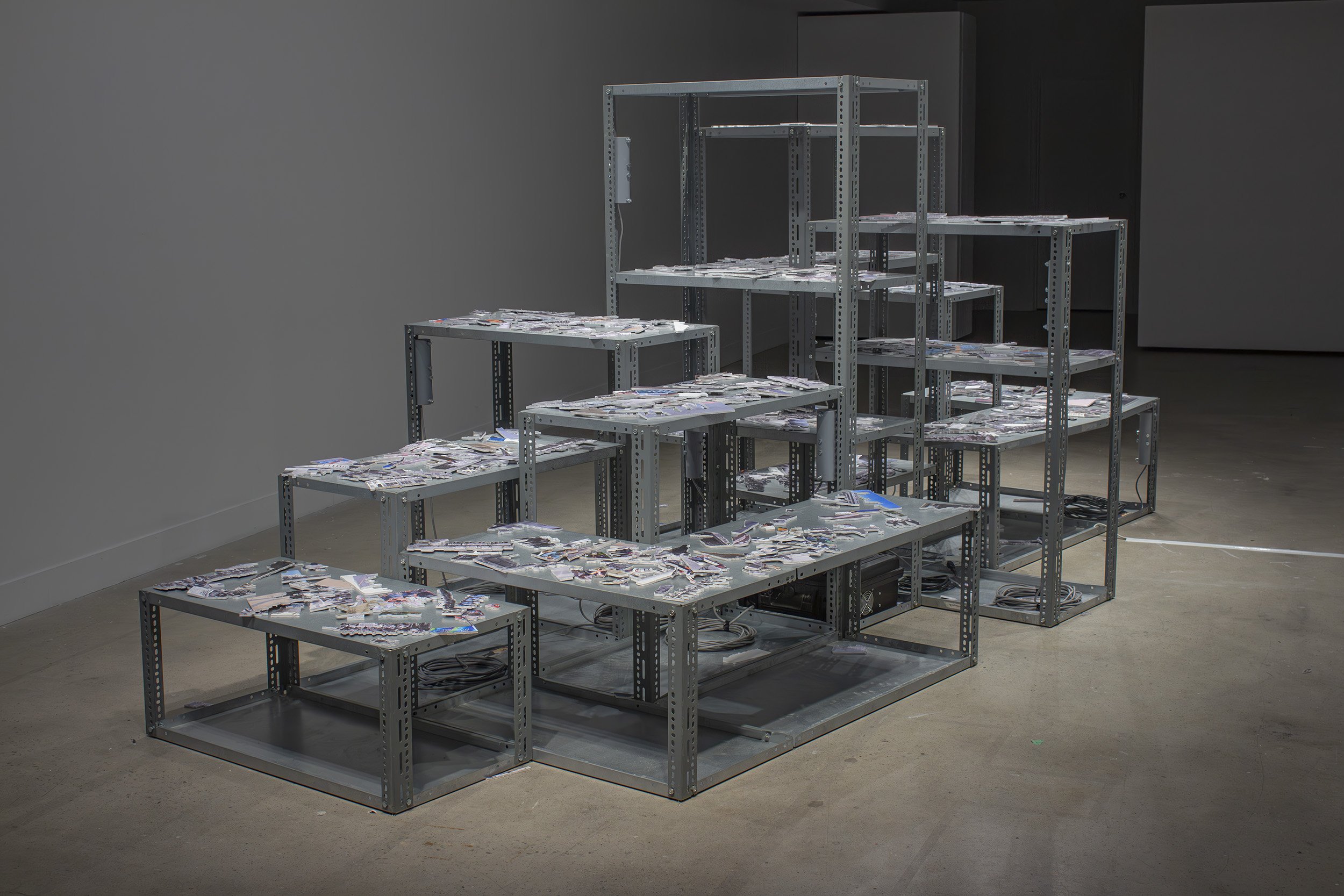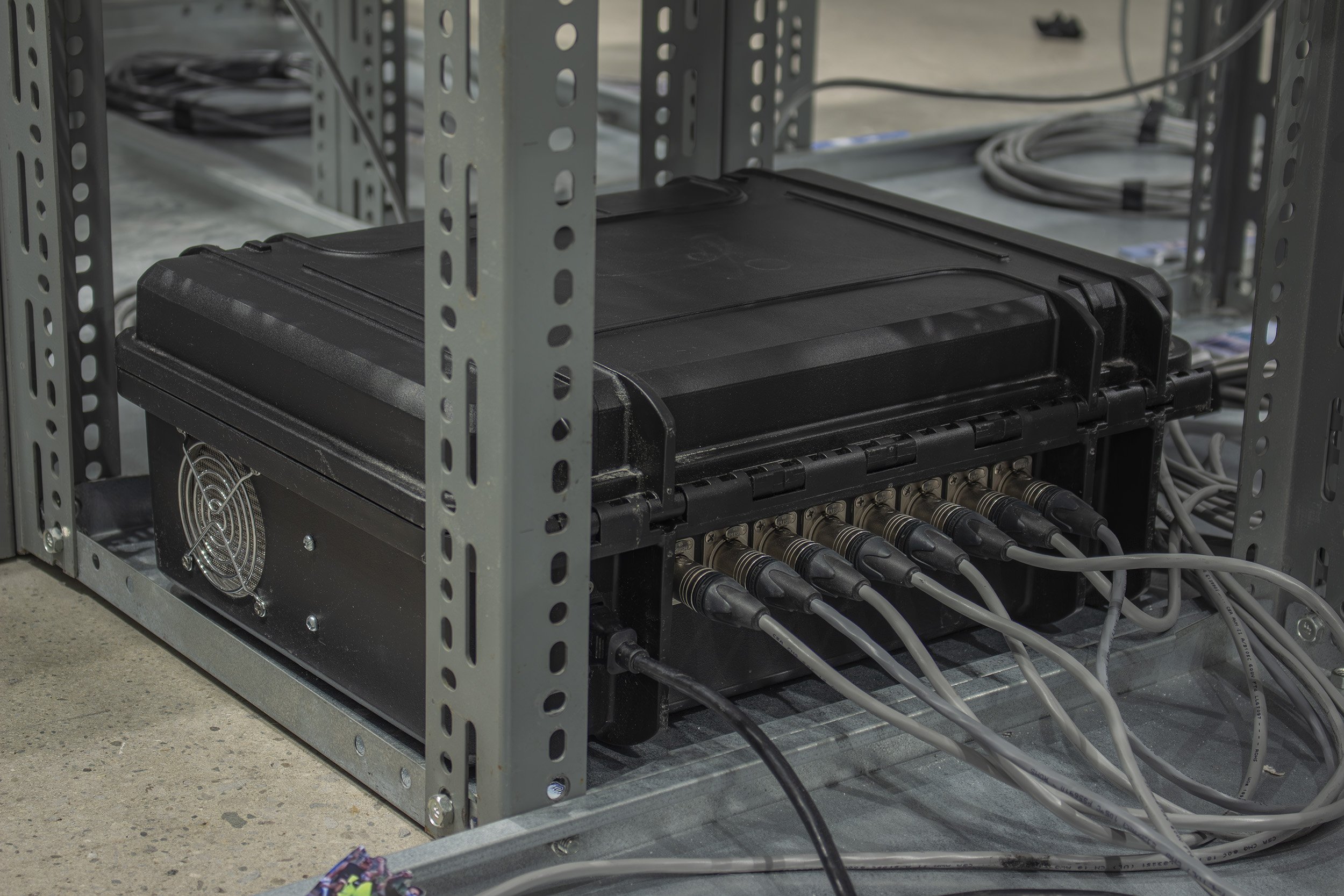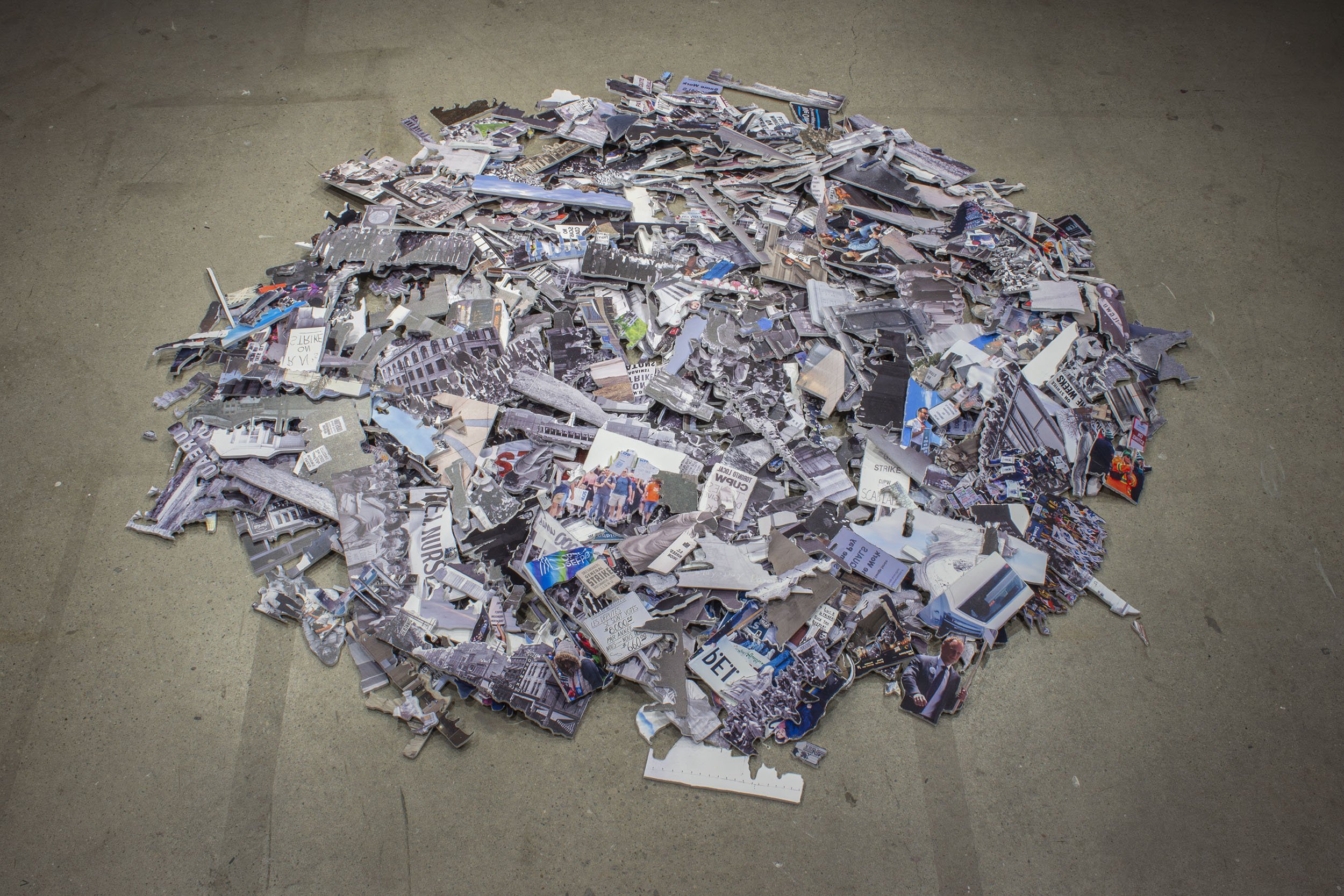







Tremor Archive
2023
Toner prints on foamcore, metal shelving, vibrating motors and electronics
5ft x 14ft x 7ft
Presented By:
SATELLiTE Project Space. London, Ontario
In the 18th century German physicist, Ernst Chladni, poured sand on a thin metal plate and ran a violin bow down its edge. The sound vibrations passing through the plate organized the particles into intricate nodal patterns, changing shape with shifts in tone. Chladni was searching for a way to visualize acoustics, and the patterns, that would later bear his name, provided a groundbreaking method for studying the complex relationship between sound waves and physical objects.
Tremor Archive takes Chladni’s experiment and applies it to a reading of our present day atomized labour market, where workers, like grains of sand, are subject to control by larger forces. A situation that has only increased since the decline of unionization from its peak in the middle of the 20th century. In the work photographs documenting Canadian labour protests from the last one hundred years are pasted to hard backing and cut up. Sources range from professional news media to amateur efforts, collecting together a wide variety of vantage points. The cut up pieces rest upon a repurposed industrial shelving unit and are physically animated by a series of vibrating electric motors bolted to the metal frame. Bodies and landscape are pulled apart, forming new compositions when anachronistic fragments collide.
Traditional forms of organized dissent in the west are struggling to keep pace with late-capitalist power grabs. Spikes in the cost of living and inflation can not be remedied by union power alone, as many entering the workplace are doing so as unprotected labourers. Visualizing this dissolution of power becomes one step in a search for new solutions. As such, Tremor Archive seeks to illuminate the complex interplay between historical struggles and contemporary labour dynamics.